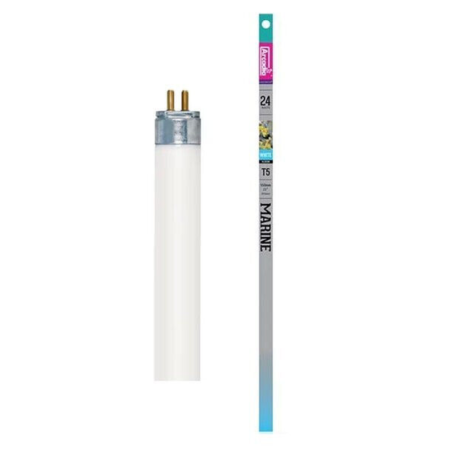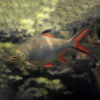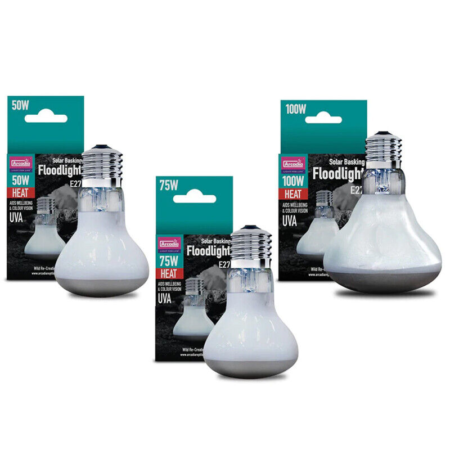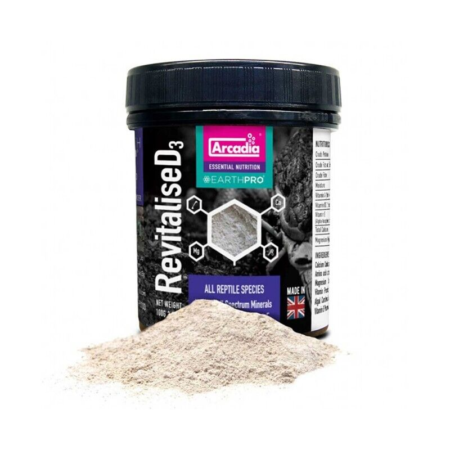Subtotal: £50.32
5 X Long Fin Cherry Barbs – Puntius Titteya – Cyprinid Fish – Amazing Fish (5), Beautiful Tropical Fish for Your Aquarium, Easy Care Companions that Thrive in Community Environments
£17.49 Original price was: £17.49.£14.52Current price is: £14.52.
Welcome these beautiful 5 X Long Fin Cherry Barbs, elegant freshwater fish that bring vibrant colors to your aquarium. These peaceful companions thrive in community tanks and flourish with proper care. Create a stunning aquatic environment with these colorful fish today.
1109 in stock
Species Introduction
Essential Care Guide for Your 5 X Long Fin Cherry Barbs – Puntius Titteya
| Optimal Living Conditions | |
|---|---|
| Water Temperature | 24-27°C (75-81°F) |
| pH Level | 6.5-7.5 |
| Water Hardness | 4-12 dKH |
| Minimum Tank Size | 80L (20 gal) |
| Salinity | Freshwater |
| Care Level | Beginner Friendly |
The Long Fin Cherry Barb, scientifically known as Puntius titteya, is a delightful member of the Cyprinidae family, native to the freshwater streams and rivers of Sri Lanka. This species is renowned for its vibrant colors and graceful swimming patterns, making it a popular choice among aquarists. The natural habitat of these fish includes densely planted areas with slow-moving waters, where they thrive among aquatic vegetation. Their striking appearance, characterized by long, flowing fins and a rich palette of reds and oranges, adds a splash of color to any aquarium. Long Fin Cherry Barbs are not only beautiful but also relatively easy to care for, making them suitable companions for both novice and experienced fish keepers.
Care Requirements Dashboard
✓ Care Level: Easy
Tank Size: Minimum 20 gallons
Water Parameters: pH 6.0-7.5, Temperature 22-28°C (72-82°F), Hardness 5-15 dGH
Diet: Omnivorous, requires a varied diet including high-quality flakes, pellets, and occasional live or frozen foods.
Natural Behavior & Temperament
Long Fin Cherry Barbs are known for their peaceful and social nature, making them ideal candidates for community tanks. They exhibit a lively swimming behavior, often darting around the aquarium in small groups, which mimics their natural schooling instincts. These fish are not aggressive and tend to thrive in environments where they can interact with other non-aggressive species. Their social behavior is enhanced when kept in groups of at least five or more, allowing them to feel secure and exhibit their natural behaviors. Observing their interactions can be a delightful experience, as they showcase their playful nature and vibrant colors, especially during feeding times.
Tank Setup Guide
Creating an ideal environment for Long Fin Cherry Barbs involves replicating their natural habitat as closely as possible. A well-planted aquarium with plenty of hiding spots and open swimming areas is essential. Use a soft substrate, such as fine gravel or sand, to mimic the riverbeds they inhabit. Incorporate live plants like Java Fern, Anubias, and floating plants to provide cover and create a natural aesthetic. Additionally, include driftwood and rocks to enhance the landscape and offer shelter for the fish. Ensure that the tank is well-cycled and has a reliable filtration system to maintain water quality, as these fish thrive in stable conditions.
Water Quality Management
✓ Good Water Quality
Maintaining optimal water quality is crucial for the health and longevity of Long Fin Cherry Barbs. The ideal pH range is between 6.0 and 7.5, with a temperature between 22-28°C (72-82°F). Regular water changes of 25% every two weeks will help keep the water clean and free of harmful toxins. Monitor ammonia, nitrite, and nitrate levels using a reliable test kit, as high levels can be detrimental to fish health. Additionally, ensure that the hardness is maintained between 5-15 dGH for optimal well-being. A well-maintained aquarium will not only support the health of your fish but also enhance their vibrant colors and active behavior.
Feeding & Nutrition
Long Fin Cherry Barbs are omnivorous and require a balanced diet to thrive. A high-quality flake or pellet food should form the basis of their diet, supplemented with frozen or live foods such as brine shrimp, daphnia, and bloodworms. Feeding should occur 2-3 times a day, with only as much food as they can consume within a few minutes to prevent overfeeding and water quality issues. It is essential to vary their diet to ensure they receive all necessary nutrients, promoting healthy growth and vibrant coloration. Observing their feeding behavior can also provide insight into their health; active and eager feeding is a good sign of well-being.
Compatibility Guide
✓ Peaceful Aquarium Fish
Long Fin Cherry Barbs are peaceful and social fish, making them excellent companions for a variety of community tank setups. They coexist harmoniously with other non-aggressive species such as tetras, rasboras, and guppies. However, it is crucial to avoid pairing them with aggressive or territorial fish, as this can lead to stress and injury. Ideal tank mates include other barbs, danios, and peaceful cichlids. When selecting tank mates, consider the size and temperament of each species to ensure a balanced community. A well-thought-out community tank will promote a serene environment, allowing all species to thrive.
Health & Wellness
Maintaining the health and wellness of Long Fin Cherry Barbs involves regular monitoring and proactive care. Common health issues include fin rot, ich, and other parasitic infections, often caused by poor water quality or stress. Signs of illness may include lethargy, loss of appetite, or visible abnormalities on the body or fins. To prevent these issues, ensure that the tank is well-maintained, and perform regular water quality checks. Quarantine any new fish before introducing them to the main tank to prevent the spread of disease. Additionally, providing a stress-free environment with plenty of hiding spots can significantly contribute to their overall health.
Breeding Information
✓ Breeding Tips
Breeding Long Fin Cherry Barbs can be a rewarding experience for aquarists. To encourage breeding, provide a separate breeding tank with soft, acidic water and plenty of fine-leaved plants for the female to lay her eggs. The ideal temperature for breeding is around 26-28°C (78-82°F). Once the female is ready to spawn, she will lay eggs among the plants, which should be removed after spawning to prevent the parents from eating them. The eggs typically hatch within 24-36 hours, and the fry should be fed infusoria or finely crushed flakes until they are large enough to consume larger foods. With proper care, the fry can grow quickly and become vibrant adults.
Acclimation Process
Introducing Long Fin Cherry Barbs to a new aquarium requires careful acclimation to reduce stress and ensure a smooth transition. Begin by floating the sealed bag containing the fish in the aquarium for about 15-20 minutes to equalize the temperature. After this, gradually mix small amounts of aquarium water into the bag over the next hour to help the fish adjust to the water parameters. Once acclimated, gently release the fish into the aquarium without adding the water from the bag. This method minimizes the risk of introducing contaminants and helps the fish adapt to their new environment more comfortably.
Long-term Care
Long Fin Cherry Barbs have a lifespan of around 5-7 years when provided with optimal care. As they grow, they may reach a maximum length of about 5 cm (2 inches). Regular monitoring of water quality, consistent feeding schedules, and maintaining a stress-free environment are crucial for their long-term health. As they age, watch for any signs of health issues and be proactive in addressing them. Regular tank maintenance, including water changes and substrate cleaning, will help maintain a healthy environment and promote the well-being of these beautiful fish.
Natural Habitat Recreation
✓ Biotope Setup
To recreate the natural habitat of Long Fin Cherry Barbs, focus on creating a densely planted aquarium with slow water flow. Incorporate a variety of live plants, such as Java Moss and Water Sprite, to mimic their natural environment. Use driftwood and rocks to create hiding spots and territories, which will help reduce stress and encourage natural behaviors. A soft substrate will also enhance their comfort and replicate the riverbeds of their native habitat. By carefully designing the aquarium, you can create a beautiful and functional environment that supports the health and happiness of your aquatic companions.
Seasonal Care Adjustments
As seasons change, it is essential to adjust the care routine for Long Fin Cherry Barbs to ensure their well-being. During warmer months, monitor the water temperature closely to prevent overheating, as these fish thrive in a temperature range of 22-28°C (72-82°F). In colder months, consider using a heater to maintain a stable temperature. Additionally, lighting duration may need adjustment to mimic natural daylight cycles, promoting healthy growth and behavior. Regularly check water parameters and perform maintenance to accommodate any changes in water chemistry that may occur with seasonal shifts.
Expert Tips
✓ Professional Advice
For optimal care of Long Fin Cherry Barbs, consider implementing a routine that includes regular water testing and maintenance. Invest in a quality water testing kit to monitor pH, ammonia, nitrite, and nitrate levels. Additionally, provide a varied diet to ensure they receive essential nutrients, which can enhance their coloration and overall health. Observe their behavior regularly; healthy fish are active and social. If any abnormalities are noticed, address them promptly to prevent further issues. Engaging with fellow aquarists through forums or local clubs can also provide valuable insights and support for your fish-keeping journey.
Troubleshooting
Common issues with Long Fin Cherry Barbs include stress from aggressive tank mates, poor water quality, and inadequate diet. If you notice signs of stress, such as hiding or lethargy, evaluate the tank environment and consider adjusting tank mates or improving water conditions. If fish show signs of illness, such as white spots or frayed fins, consult a veterinarian or fish health expert for guidance on treatment options. Regularly reviewing your care routine and making necessary adjustments can help prevent many common problems and ensure a thriving aquarium.
Scientific Background
✓ Taxonomy and Conservation
The Long Fin Cherry Barb belongs to the family Cyprinidae, which includes many other popular freshwater species. They are classified under the genus Puntius, which encompasses various barbs known for their vibrant colors and sociable nature. Conservation of their natural habitats is crucial, as pollution and habitat destruction threaten their populations in the wild. By responsibly caring for these fish in captivity, aquarists can contribute to the awareness and appreciation of this beautiful species, promoting its preservation for future generations.
Advanced Care Techniques
For experienced aquarists looking to enhance the care of Long Fin Cherry Barbs, consider implementing advanced techniques such as breeding programs or specialized feeding regimens. Breeding can be encouraged through selective pairing and environmental adjustments, while specialized feeding can include high-quality supplements to enhance coloration and vitality. Additionally, engaging in biotope aquascaping can create a more natural environment that promotes natural behaviors and enhances the overall aesthetic of the aquarium. Continuous learning and adaptation of care techniques will lead to a more rewarding experience in fish keeping.
Water Quality Parameters
Optimal Range
24-27°C
6.5-7.5
0 ppm
Caution Zone
22-24°C or 27-29°C
6.0-6.5 or 7.5-8.0
0.25-0.5 ppm
Danger Zone
<22°C or >29°C
<6.0 or >8.0
>0.5 ppm
Monitoring Tip: Test water parameters weekly and perform regular water changes to maintain optimal conditions for your aquatic friends!
Frequently Asked Questions
Q: What tank size is required for Long Fin Cherry Barbs?
Long Fin Cherry Barbs thrive in a minimum tank size of 60 litres. This size allows for adequate swimming space and a stable environment. It is advisable to provide a larger tank if you plan to keep a group, as they are social creatures that enjoy the company of their own kind. A well-planted tank with open swimming areas will help mimic their natural habitat and reduce stress. Additionally, ensure that the tank is appropriately filtered and heated to maintain optimal water conditions.
✓ Expert Tip
Consider adding floating plants to provide shaded areas, which these fish often enjoy.
Q: What water parameters do Long Fin Cherry Barbs require?
Long Fin Cherry Barbs prefer slightly acidic to neutral water, with a pH range of 6.0 to 7.5. The water hardness should ideally be between 5-15 dGH, and maintaining a temperature between 22-28°C is crucial for their health. Regular water changes of 10-20% weekly are recommended to keep the water quality high. Monitoring ammonia, nitrite, and nitrate levels is essential to ensure a stable environment. Investing in a reliable water testing kit will help you maintain these parameters.
✓ Expert Tip
Using a high-quality water conditioner during water changes can help remove harmful chemicals.
Q: How often should I feed Long Fin Cherry Barbs?
It is advisable to feed Long Fin Cherry Barbs small amounts of high-quality flake food or pellets twice daily. They also appreciate occasional treats such as frozen or live food, including brine shrimp and daphnia, which can enhance their colour and health. Be cautious not to overfeed, as this can lead to poor water quality and health issues. A feeding routine encourages natural foraging behaviour, which is beneficial for their overall well-being.
✓ Expert Tip
Observe their feeding habits to ensure they are consuming all food within a few minutes.
Q: What are the best tank mates for Long Fin Cherry Barbs?
Long Fin Cherry Barbs are generally peaceful and do well in community tanks. Suitable tank mates include other small, non-aggressive species such as Tetras, Rasboras, and smaller Gouramis. Avoid keeping them with larger, aggressive fish that may intimidate or harm them. It is also wise to keep them in groups of at least five, which helps reduce stress and allows them to display their natural schooling behaviour.
✓ Expert Tip
Monitor interactions among tank mates to ensure a harmonious environment.
Q: How do I properly acclimatise Long Fin Cherry Barbs to my aquarium?
Acclimatisation is vital for reducing stress in Long Fin Cherry Barbs. Begin by floating the sealed bag in your aquarium for about 15-20 minutes, allowing the water temperature to equalise. After this, open the bag and gradually add small amounts of your aquarium water over the next hour. This process helps them adjust to differences in water chemistry. Finally, gently net the fish into the tank, avoiding adding bag water to your aquarium.
✓ Expert Tip
Keep the aquarium lights dim during acclimatisation to create a calming environment.
Q: What are the signs of healthy Long Fin Cherry Barbs?
Healthy Long Fin Cherry Barbs exhibit vibrant colours, clear eyes, and active swimming behaviour. They should display normal feeding habits and social interaction with tank mates. Look out for any signs of distress, such as lethargy, loss of appetite, or abnormal swimming patterns, which may indicate stress or illness. Regular observation will help you identify any changes in behaviour or appearance, allowing for prompt action if needed.
✓ Expert Tip
Keep a close eye on their fins; fraying or clamping can indicate stress or disease.
Q: How do I successfully breed Long Fin Cherry Barbs?
Breeding Long Fin Cherry Barbs can be a rewarding experience. To encourage breeding, keep a group of fish, ideally with more females than males, in a separate breeding tank with fine-leaved plants for the females to lay eggs. Provide slightly softer and slightly acidic water, and maintain a temperature of around 26°C. After spawning, remove the adults to protect the eggs from being eaten. The eggs typically hatch within 24-36 hours, and the fry can be fed infusoria or finely crushed flake food until they are large enough for standard food.
✓ Expert Tip
Ensure the breeding tank is well-maintained to promote healthy fry development.
Q: What temperature should I maintain for Long Fin Cherry Barbs?
The ideal temperature range for Long Fin Cherry Barbs is between 22°C to 28°C. Consistency in temperature is paramount, as fluctuations can lead to stress and health issues. A reliable aquarium heater and thermometer can help maintain stable conditions. Regular monitoring of the water temperature will ensure that your aquatic companions are comfortable and thriving.
✓ Expert Tip
Avoid placing the tank in direct sunlight or near heaters that could cause temperature spikes.
Q: How long do Long Fin Cherry Barbs typically live in captivity?
In a well-maintained aquarium, Long Fin Cherry Barbs can live up to 5-7 years. Providing optimal water quality, proper nutrition, and a stress-free environment significantly contributes to their lifespan. Regular health checks and prompt action in case of illness will also help ensure that they thrive for many years. The key is to maintain a stable and clean habitat for them.
✓ Expert Tip
Keep a routine for water changes and tank maintenance to promote longevity.
Q: What type of substrate is most suitable for Long Fin Cherry Barbs?
Long Fin Cherry Barbs prefer a soft substrate, such as sand or fine gravel, which allows them to forage comfortably. This type of substrate is gentle on their delicate fins and encourages natural behaviour. It is also beneficial for planting aquatic plants, creating a natural environment. Avoid sharp or coarse substrates, as they can cause injury to the fish.
✓ Expert Tip
Layering substrate with nutrient-rich soil underneath can enhance plant growth.
Q: What behavioural patterns should I expect from Long Fin Cherry Barbs?
Long Fin Cherry Barbs are known for their peaceful and social behaviour. They are active swimmers and often display schooling behaviour, which can be quite captivating. You may notice them darting around the tank, particularly during feeding times. They also enjoy exploring their environment, so providing hiding spots and plants will encourage their natural curiosity. Observing their interactions can provide insight into their mood and health.
✓ Expert Tip
Introduce new tank mates gradually to reduce stress during social interactions.
Q: How can I prevent common diseases in Long Fin Cherry Barbs?
Preventing diseases in Long Fin Cherry Barbs involves maintaining optimal water quality, providing a balanced diet, and ensuring a stress-free environment. Quarantining new fish before introducing them to the main tank is crucial to prevent the spread of disease. Regular water changes and monitoring for changes in behaviour or appearance can help identify issues early. Vaccination against common parasites is not possible, but ensuring your fish are healthy and the tank is clean will greatly reduce risks.
✓ Expert Tip
Invest in a good quality water testing kit to monitor parameters effectively.
Q: What lighting conditions do Long Fin Cherry Barbs prefer?
Long Fin Cherry Barbs thrive in moderate lighting conditions. They appreciate a well-lit tank that supports plant growth, but excessive brightness can cause stress. It is advisable to provide shaded areas using floating plants or decorations to create a more natural environment. A consistent light cycle of 10-12 hours a day will help maintain their natural behaviour and colouration.
✓ Expert Tip
Use a timer to ensure consistent lighting, which can help regulate their natural rhythms.
Q: How do I recognise stress in Long Fin Cherry Barbs?
Signs of stress in Long Fin Cherry Barbs can include hiding, erratic swimming patterns, and loss of colour. They may also exhibit clamped fins or reduced activity levels. If you notice these behaviours, it is essential to assess their environment, including water quality, temperature, and tank mates. Addressing any issues promptly can help alleviate stress and improve their overall well-being.
✓ Expert Tip
Creating a stable environment with plenty of hiding spots can help reduce stress.
Q: What natural habitat conditions should I replicate for Long Fin Cherry Barbs?
Long Fin Cherry Barbs are native to slow-moving rivers and streams in South Asia. To replicate their natural habitat, provide a planted tank with plenty of hiding places, such as driftwood and rocks. Soft, slightly acidic water with moderate lighting will create a comfortable environment. Maintaining a gentle water flow mimics their natural conditions and promotes their health and well-being.
✓ Expert Tip
Regularly check water parameters to ensure they remain stable and conducive for your fish friends.













Emily Carter (verified owner) –
I recently added 5 Long Fin Cherry Barbs to my community tank, and I couldn’t be happier! These little guys have transformed my aquarium into a dynamic and colorful paradise. After about two weeks, they settled in beautifully, showcasing their stunning fins and vibrant colors. I love how they interact with each other, darting around the tank and displaying their playful behavior. Compared to other tropical fish I’ve kept, these barbs are so active and engaging, making them a joy to watch.
They seem to thrive in a well-planted environment, so I recommend adding some live plants for them to explore. Just be careful with water parameters; they prefer slightly acidic to neutral pH. My only minor concern was that they can be a bit skittish at first, but with some patience, they quickly became accustomed to their surroundings. If you’re a caring fish parent looking for lively and peaceful freshwater fish, these Long Fin Cherry Barbs are a fantastic choice! I would definitely purchase them again, and they’ve made my aquarium a much happier place.
Emily Carter (verified owner) –
I recently added 5 Long Fin Cherry Barbs to my aquarium, and I couldn’t be happier with my purchase! These little guys are such a delight, darting around the tank with their vibrant colors and elegant fins. After just two weeks, they’ve settled in beautifully and are thriving in my planted community tank alongside tetras and guppies. I appreciate that they’re easy-care tropical fish that don’t require overly complicated setups, which makes them perfect for both beginners and seasoned fish keepers alike. I’ve noticed that they enjoy foraging among the plants, and their playful nature brings so much life to the aquarium. Compared to other barbs I’ve kept in the past, the Long Fin Cherry Barbs are far less aggressive, which is great for maintaining harmony in a community environment. The only minor issue I faced was a bit of initial shyness, but that quickly faded as they became more comfortable in their new home. If you’re looking for a peaceful and captivating species to brighten your tank, I highly recommend these cherry barbs! They truly are amazing fish for any freshwater aquarium.